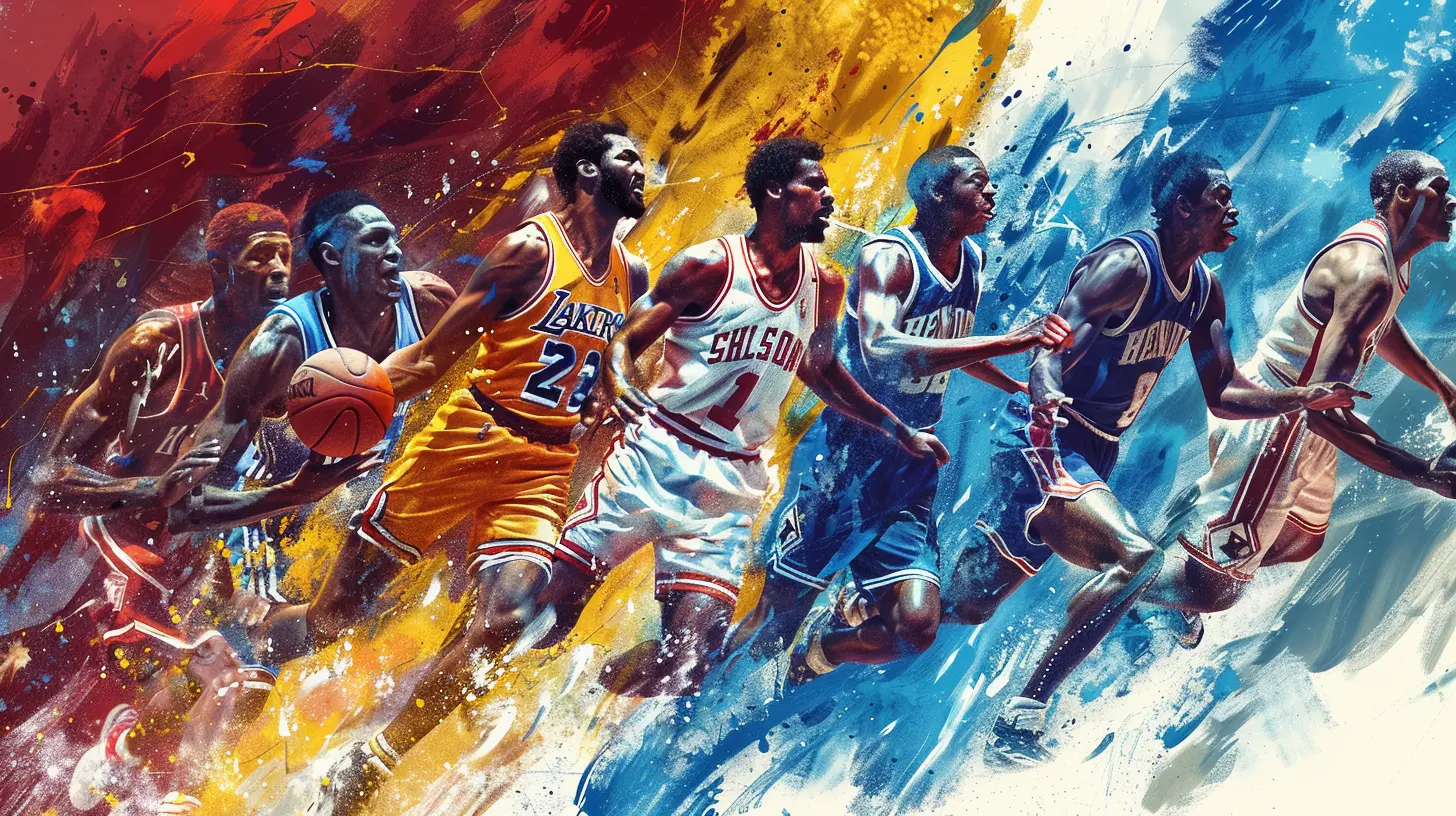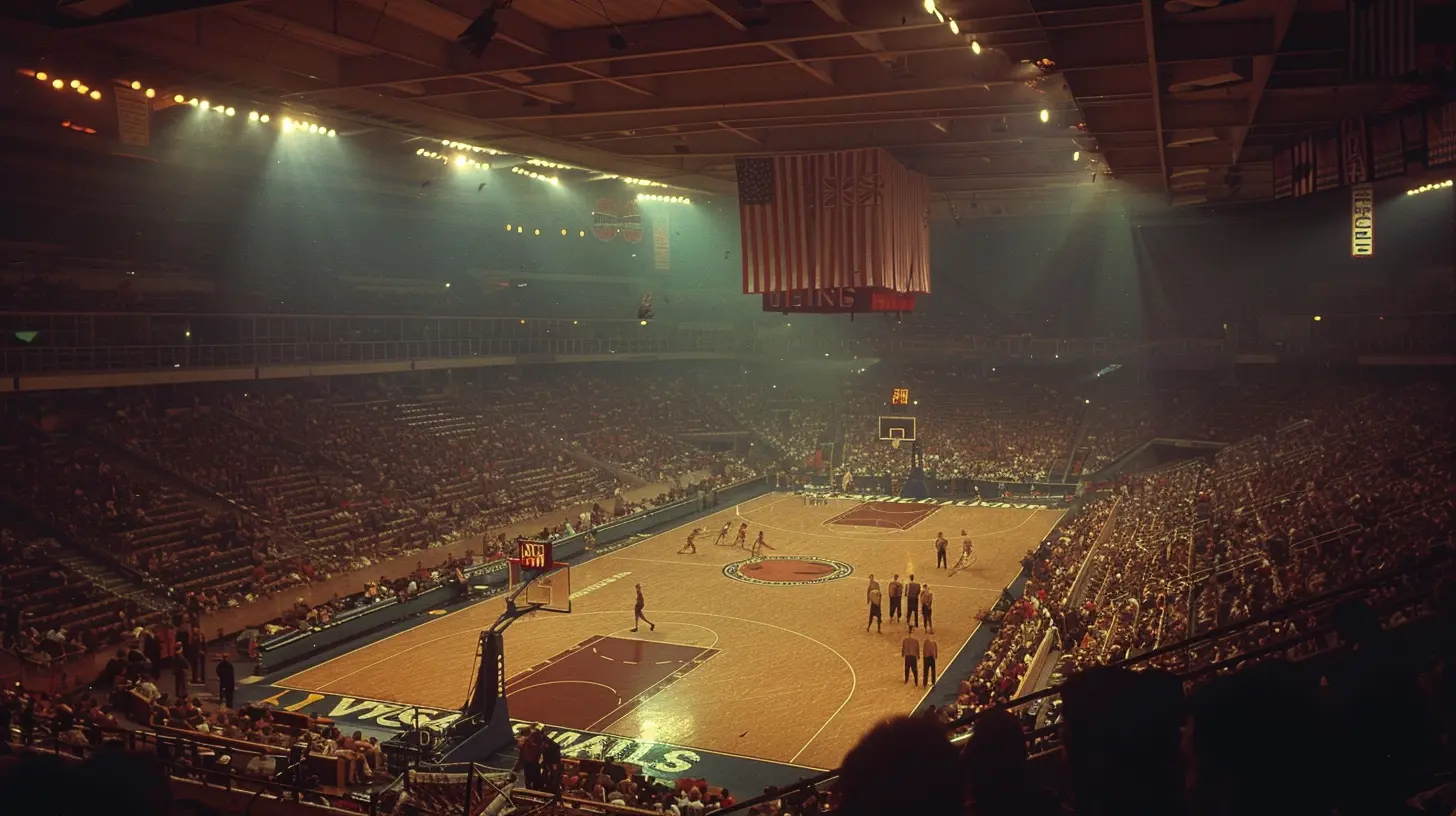8 March 2025
The world of professional basketball wasn't always dominated by the NBA. In fact, there was a time when the sport was split between two competing leagues—the National Basketball Association (NBA) and the American Basketball Association (ABA). While the NBA is now the undisputed king of pro basketball, the ABA played a crucial role in shaping the game as we know it today. From flashy dunks to the iconic three-point line, the ABA left an indelible mark on basketball, even though its time in the spotlight was relatively brief.
So, what was the ABA? How did it rise so quickly, and why did it eventually fall? And most importantly, how did it forever change the game of basketball? Let’s dive into the fascinating history of the ABA and see how a league that only existed for about a decade revolutionized the sport we love.

The Birth of the ABA: A New Vision for Basketball
The American Basketball Association was born in 1967 as a direct rival to the NBA, which had been the dominant force in professional basketball for years. The ABA was a league with a different vision—one that sought to make basketball more exciting, more entertaining, and more accessible to fans. If the NBA was the traditional, buttoned-up older sibling, the ABA was the rebellious, flashy younger one.The league was founded by a group of investors who believed there was room for another professional basketball league. Their goal? To challenge the NBA’s monopoly and create a product that would attract both fans and players. They weren’t just trying to compete with the NBA—they wanted to change the way basketball was played and watched.

The ABA's Unique Style: Flash, Flair, and Fun
From the very beginning, the ABA was all about innovation. It wasn’t just a carbon copy of the NBA; it was designed to be different, more exciting, and, frankly, more fun. The league introduced several key elements that set it apart from its rival.The Red, White, and Blue Ball
One of the most iconic symbols of the ABA was its red, white, and blue basketball. While the NBA used a traditional orange ball, the ABA’s colorful ball was eye-catching and became a symbol of the league's flashy and entertaining style. It wasn’t just about aesthetics, though—the multi-colored ball made it easier for fans in the stands and watching on TV to follow the action. Plus, it looked incredible when players threw down one of the league’s signature high-flying dunks.The Three-Point Line
The ABA was ahead of its time in many ways, but perhaps its most lasting contribution to the game of basketball was the introduction of the three-point line. Back in the 1960s, the idea of shooting from long range seemed radical. Traditional basketball emphasized inside play, but the ABA bucked that trend by encouraging players to shoot from deep.The three-point line added a new strategic element to the game and made it more exciting for fans. Shooters could now stretch defenses, and teams had to rethink how they approached the game. While the NBA initially scoffed at the idea, it eventually adopted the three-point line after the ABA-NBA merger in 1976. Today, the three-point shot is one of the most important aspects of the game, and we have the ABA to thank for it.
High-Flying Dunks and Fast-Paced Play
If you think modern-day basketball is fast-paced with thrilling dunks, you can thank the ABA for that, too. The league encouraged a run-and-gun style of play, with teams pushing the pace and looking for fast breaks whenever possible. The ABA had a reputation for high-scoring games, and its players embraced an up-tempo style that was more entertaining for fans than the more methodical, slower pace that often characterized NBA games at the time.And let’s talk about dunks. The ABA turned the dunk into an art form. While the NBA was more conservative and frowned upon showboating, the ABA embraced the flair and athleticism of its players. Dunks became a major attraction, and players like Julius "Dr. J" Erving became household names thanks to their ability to soar through the air and throw down jaw-dropping slams.

Star Power: The ABA’s Brightest Talents
If the NBA had established stars, the ABA was all about discovering new ones. The league helped launch the careers of several players who would go on to become legends in the sport, both in the ABA and eventually in the NBA.Julius "Dr. J" Erving
Perhaps no player embodied the spirit of the ABA more than Julius Erving. Known as "Dr. J," Erving was a high-flying forward who brought incredible skill and flair to the game. His ability to soar through the air, combined with his creativity and athleticism, made him one of the most popular players in the league. Erving’s dominance in the ABA, particularly his ability to dunk in spectacular fashion, helped elevate the league’s profile and attracted fans who were eager to see his next highlight-reel play.George Gervin
Another ABA standout was George "The Iceman" Gervin. Known for his silky-smooth playing style and his famous finger roll layup, Gervin became one of the league’s biggest stars. He was a scoring machine, and his ability to put the ball in the basket with ease made him a fan favorite. Like Erving, Gervin later transitioned to the NBA after the merger, where he continued to have a Hall-of-Fame career.Spencer Haywood
Spencer Haywood’s impact on basketball transcended the court. In 1970, Haywood challenged the NBA’s rule that players had to wait four years after high school before turning pro. He signed with the ABA’s Denver Rockets, which led to a legal battle that ultimately allowed players to enter professional basketball earlier. This case, known as "Haywood v. NBA," paved the way for future stars like LeBron James and Kobe Bryant to jump to the NBA straight from high school.These players, along with many others, helped put the ABA on the map and made it clear that the league was producing talent that could rival, and in some cases surpass, NBA stars.

The ABA's Struggles: Financial Woes and Lack of Stability
Despite its innovations and exciting style of play, the ABA struggled to compete with the NBA in several key areas, particularly financially. The league was constantly on shaky ground, with teams frequently folding or relocating. While the NBA had more stable franchises and a larger fanbase, the ABA struggled to generate consistent revenue.One of the biggest challenges the ABA faced was its inability to secure major television contracts. The NBA had a strong foothold in the TV market, and the ABA struggled to get national exposure. Without the revenue from TV deals, many ABA teams found it difficult to stay afloat. As a result, the league constantly faced financial instability, with some teams even failing to pay their players on time.
Additionally, the league’s structure was somewhat chaotic. Teams came and went, and ownership changes were frequent. This lack of stability made it difficult for the ABA to gain the same level of credibility as the NBA, which had a more established and polished image.
The ABA-NBA Merger: A Bitter End, But a Lasting Legacy
By the mid-1970s, it was clear that the ABA couldn’t survive on its own. The league was hemorrhaging money, and many of its teams were on the verge of folding. In 1976, the NBA and ABA finally agreed to merge, bringing the best elements of the ABA into the NBA. Four ABA teams—the Denver Nuggets, Indiana Pacers, New York Nets (now the Brooklyn Nets), and San Antonio Spurs—joined the NBA, while the rest of the ABA’s teams folded.The merger marked the end of the ABA as a separate league, but its influence on the game of basketball lived on. The NBA adopted several of the ABA’s innovations, including the three-point line and the more up-tempo style of play. Additionally, many of the ABA’s biggest stars, including Dr. J, Gervin, and others, went on to have successful careers in the NBA, further cementing the ABA’s legacy.
How the ABA Changed Basketball Forever
Even though the ABA only lasted about a decade, its impact on basketball was profound. The league’s emphasis on entertainment, flash, and creativity helped shape the modern game. The three-point line, which is now a crucial part of basketball strategy, was an ABA innovation. The league’s fast-paced style and focus on athleticism influenced how the game is played at every level, from high school to the NBA.Moreover, the ABA’s willingness to embrace individuality and flair paved the way for the more player-centric, personality-driven culture of basketball that we see today. Players like Michael Jordan, Kobe Bryant, and LeBron James all owe a debt of gratitude to the ABA for helping to create a culture where stars could shine both on and off the court.
So, while the ABA may no longer exist, its legacy lives on every time a player drains a three-pointer, throws down a monster dunk, or dazzles fans with a highlight-reel play. The rise and fall of the ABA may have been brief, but its influence on basketball will be felt forever.









Zorion Pace
The article brilliantly captures the transformative journey of the ABA, highlighting its innovative spirit and lasting impact on basketball. From the introduction of the three-point line to flashy play styles, the ABA's legacy is undeniable. A fascinating read for any basketball enthusiast!
March 25, 2025 at 5:32 AM